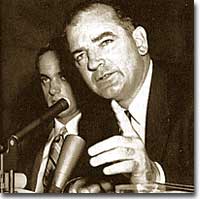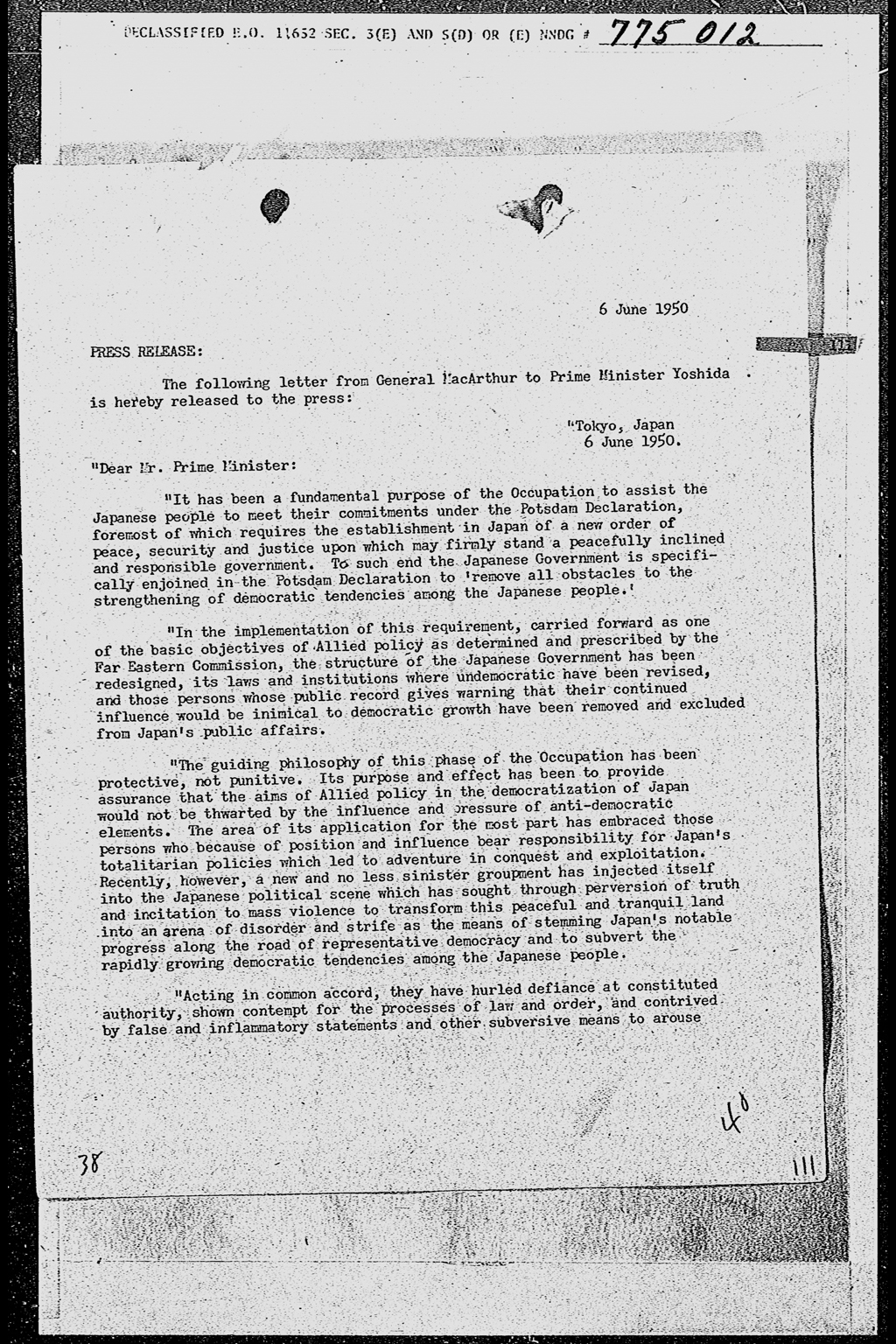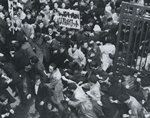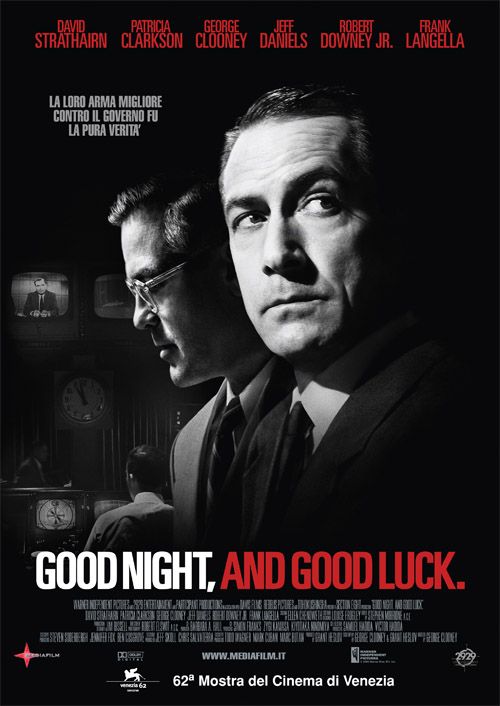Hirata Tetsuo and John W. Dower
Translation by Ben Middleton
Japan Focus Introduction. History often taps us on the shoulder unexpectedly. War and occupation—and, more particularly, occupied Iraq vis-a-vis occupied Japan a half-century ago— is a good example of this
In this case, the tap on the shoulder really began in 2002 as a crude, hubristic shove. In the propaganda campaign that preceded the invasion of Iraq in March 2003, officials in the Bush administration frequently evoked the example of Japan after World War Two, where the U.S.-led occupation proceeded smoothly and ended happily in a democratic and prosperous nation staunchly loyal to the United States. President Bush, Secretary of State Colin Powell, NSC director Condoleezza Rice, and many others repeatedly evoked this reassuring analogy before the invasion, and before chaos consumed Iraq. Astonishingly, the president has continued to do so up to the present day—using the fifth anniversary of V-J Day in 2006 to resurrect all the by-now tattered and torn analogies to World War Two and its aftermath, and using the Washington visit of Prime Minister Abe Shinzo in April 2007 to murmur the same incantation.
The deceptiveness (and tragedy) of this false analogy is a subject in itself. Japan in 1945 was a vastly different state and body politic than Iraq, and the America of today is likewise a very different state and society than it was all those many decades ago. Beyond this, the point has been made that even the relatively successful “occupation of Japan” was an anomaly, for there were really three U.S. occupations in post-World-War-Two East Asia: in Japan proper, in the isolated and militarized Japanese prefecture of Okinawa, and in the Republic of Korea. Cold War strategy dictated occupation policies, and varied conspicuously from place to place, with Okinawa and Korea receiving much harsher treatment.
The tap on the shoulder for Hirata Tetsuo, author of the essay that follows, came from Hollywood rather than the White House, but it fits this same picture. His treatment of “Japan’s Red Purge” reminds us that there were actually more than three occupations in Northeast Asia after 1945, for the occupation of Japan proper was itself a two-stage affair. The McCarthyist witch-hunts that savaged the United States had a notorious counterpart in occupied Japan, where early ideals of demilitarization and democratization were soon subjected to a “reverse course” preoccupation with reconstruction and remilitarization. The so-called Red purges involved firing of thousands of individuals in both the private and public sectors—focusing not only on the ranks of organized labor, but also progressive and leftwing critics of the Cold War and reverse course in educational circles and the mass media.

Joseph McCarthy and Chief Counsel Roy Cohn
This graphic example of U.S.-style “democracy” in action has had a lasting legacy in Japan, albeit a somewhat ironic one. It fractured an already highly factionalized Left. It strengthened the foundations of what would turn out to be an enduring “one-and-one-half-party” democracy, dominated by slavishly pro-American conservatives. And it made a mockery of rule of law (just as U.S.-endorsed remilitarization under the clearly anti-military Constitution would continue to do to the present day).
The irony? Even with all this, Japan—like much of postwar and contemporary Europe—has maintained public support for political and ideological discourse across a classic Right-Left spectrum that accepts the seriousness and legitimacy of social democratic, socialist, and even communist perspectives. It is the United States where the purge of such “Red” heresies has been most thoroughgoing. John W. Dower
I recently caught the film Good Night and Good Luck, directed and co-written by George Clooney. The protagonist is the newscaster, Edward Murrow, who in the early 1950s enjoyed great popularity for bravely standing up to Senator Joseph McCarthy, the instigator of the ‘Red witch-hunts.’
The ‘Red Scare’ in the US is often referred to as McCarthyism, after the name of its instigator, while the supposed ‘Reds’ were concentrated among ‘intellectuals’ such as film-industry people, writers and professors. ‘Hollywood’, which exemplified the American dream, was particularly targeted. Big-name actors, screenwriters, playwrights, and musicians were summoned to appear before the House Committee on Un-American Activities where they were ruthlessly attacked.
McCarthyism in Hollywood has often been in the news in Japan. However, for some reason, there has been little talk here of the fury unleashed by a ‘Red Purge’ that occurred on an even greater scale than McCarthyism—one more systematic, authoritarian and insidious, and based on an even more heinous anti-communism. I refer to the ‘Red Purge’ that swept through Japan during that same era.
Following the practice of calling McCarthyism a ‘blot’ on American democracy, we can speak of the Japanese Red Purge as a ‘headwind’ (gyakufu) or backlash against postwar Japanese democracy. Even at the smallest of the range of estimates of its victims, they number no fewer than 27,000. Perhaps it is the sheer magnitude of the events that weighs heavily on people’s minds.
The Red Purge provides many lessons when it comes to observing the current situation of Japanese capitalism, which is characterized by corporate restructuring or downsizing (euphemisms for mass layoffs of workers), and the logic of market economics sweeping haughtily through the land and wreaking havoc with people’s lives. What we can learn from the Red Purge speaks to the hopes for Japan’s future.
First tarred, then purged from the workplace
We first address the question of just what the ‘Red Purge’ was.
The Red Purge was a series of arbitrary layoffs by government agencies and corporations aimed at heavy-handedly eliminating from the workplace those workers who had been unilaterally branded ‘Red’. Because the target went well beyond communists and the suppression of the Japanese Communist Party to include democrats and labour-union activists, the event directly called into question the foundations of the freedom and democracy guaranteed by the Japanese constitution. The purge occurred during the US occupation of Japan from 1949 to 1951.
Table 1 indicates the number of victims of this Red Purge by stage and target. Of course, these are just ballpark figures. The heaviest tolls were among national civil servants and officials of regional public organizations under the pretext of ‘administrative adjustment’ during the first phase, and among workers at private corporations during the third phase. A total of over 20,000 workers from both categories were stigmatized as being ‘Red’ and purged from their workplaces, after which they were branded as social failures.
Table 1 The Number of the Purged, 1948-1950

On what grounds were such large numbers of workers fired, and by what means?
The strongest weapon in the arsenal used against them was an executive order enacted in April 1949 called the Associations Control Ordinance (Dantaito kisei seirei). This ordinance, drawn up according to a SCAP ‘directive’, stipulated that communism was ‘undemocratic’, that members of organizations had to file notification of their membership. It further stipulated the disbandment of some organizations. Needless to say, the ordinance itself was extremely undemocratic. Moreover, the registration of ‘communists’ required by this ordinance became an extremely powerful tool in identifying ‘Reds’.

MacArthur’s 6 June 1950 letter to Yoshida Shigeru demanding the purge of members of the Central Committee of the Japanese Communist Party from public service.
However, because not all Communist Party members who had registered were actually purged, and because a considerable number of non-Communist Party members were purged, we can conclude that in practice the basis for the identification of ‘Reds’ lay elsewhere. Let’s look at some specific cases.
In the ‘corporate restructuring’ at Toshiba in July 1949, some 4,581 workers, including 202 Communist Party members, were laid off. The ‘Personnel Adjustment Criteria’ that Toshiba used consisted of nine articles. They provided for the ‘readjustment’ of those in the following categories: (1) workers with low skill levels; (2) workers who fail to perform their duties; (3) workers in breach of administrative regulations; (4) workers who do not cooperate with company operations; (5) workers who fail to report for work; (6) workers frequently absent from work due to accidents; (7) workers on lengthy leaves from work due to illness; (8) workers difficult to redeploy or transfer; (9) workers for whom there is a lack of appropriate position due to operational downsizing.
The breadth of these ‘criteria’ indicates the massive scale of the dismissals. Criteria (5)~(7) are general performance evaluation criteria; (8) and (9) relate to the slogan of downsizing. (1) and (2) take the position of improving labour efficiency, while (3) and (4) imply a rejection of anti-corporate activities. In other words, article (4) was intended to ‘readjust’ influential labour activists and labour union officials.
Comparing the ‘Personnel Reorganization Criteria’ with Hitachi’s 14-article ‘standard’, it is clear that it was neither unique nor peculiar to Toshiba. Hitachi’s standard applied to the following categories:
(1) workers with low occupational efficiency whose performance fails to improve; (2) workers whose length of service is comparatively short—excluding workers necessary for operations or whose performance is exceptionally good; (3) workers requiring redeployment for whom it is difficult to find appropriate redeployment; (4) workers uncooperative with company operations; (5) workers who are not required for company operations; (6) workers frequently absent from work, late, or who leave work early; (7) workers who disrupt workplace order or discipline; (8) workers who are dissolute and compromise their reputation as employees; (9) workers who do not follow their superiors’ operational instructions; (10) workers who hinder other workers’ willingness to produce; (11) workers with a low degree of integration and collabouration with their superiors and co-workers; (12) workers whose livelihood would be comparatively little affected were they to leave employment; (13) workers with delicate constitutions, with the exception of those required for operations; (14) workers with low level contributions to business efficiency for reasons other than those mentioned above.
The number of clauses used by Hitachi increased and the criteria are more specific, yet qualitatively the regulations are the same as Toshiba’s. In effect, this proves that the ‘personnel reorganization’ regimes did not so much reflect the will of individual corporations, but were based on the disposition of SCAP.
The Supreme Court was Subservient to Correspondence from M
From the start of 1950, the Red Purge by private corporations moved forward apace with the backing of GHQ. Macarthur’s letter of July 18 to Prime Minister Yoshida Shigeru led the way. The letter directly orders suspended publication of the central organ of the Japanese Communist Party, Akahata (Red Flag), along with publication of any successor newspaper. This letter became the sole legal basis for the red purge in the media. The GHQ authorities insisted that the letter took precedence over all other laws and that its instructions constituted a ‘directive’ (shiji) rather than an ‘order’ (shirei).

Tokyo University students mobilize to oppose the purge
In later years, this letter would play an important role in a lawsuit seeking legal redress, but the interpretation of the Supreme Court at the time was as follows: (1) the letter constituted an extra-constitutional regulation; (2) the exclusion of communists and communist sympathizers from the news media constituted a ‘directive’; (3) the letter was binding on all private-sector firms; (4) the statement by [Robert T.] Amis, head of SCAP’s Labour Division, projecting the Red Purge as an expression of the free-will of management and labour unions, had ‘final authority’; (5) the term ‘communists and communist sympathizers’ was to be understood simply as such, and being a communist or sympathizer was sufficient for a person to be subject to dismissal.
However, examined in light of the verdict of history, it is clear today that this interpretation by the Supreme Court was a political judgment supportive of the GHQ line. At the same time, the judiciary abandoned the banner of [legal] redress.
Upon receiving Macarthur’s letter, the Labour Division at GHQ held meetings with management and labour union representatives from various industrial sectors, pressed for complicity in the Red Purge, emphasized that ‘red’ did not mean all members of the Communist Party, urged a ‘prudent response’, and from first to last followed a course of political opportunism.
The government, while on the one hand seeking to introduce measures to proscribe the Communist Party, proceeded to ‘exclude communists and others from public office’ on the basis of agreements and understandings reached by the cabinet. At the same time, the Labour Ministry urged all firms to ‘expel destructive communist elements’.
The Japan Federation of Employers’ Associations (Nihon Keieisha Dantai Renmei, or Nikkeiren) [1] led the ‘red purge’ among private-sector firms. ‘On Policies towards the Elimination of Red Elements’, a long report by Nikkeiren, became the basis for the corporate red purge. Its main points were: (1) lumping together declared and secret members of the Communist Party and communist sympathizers, blatantly labeling them as ‘red elements,’ and specifying a policy of elimination; (2) justifying the elimination in terms of the social ideals of ‘the protection of firms and, by extension, the welfare of society’, while emphasizing that the actual reason was the anti-social, self-interested agenda of ‘corporate convenience’; (3) urging that a list of Communist Party members be made, to be verified through investigations. In the case of ‘secret party members,’ it demanded rigorous investigations, while for sympathizers, it laid out three categories of activities—(i) joint actions with Communist Party members, (ii) labour union activities and activities obstructing company operations, (iii) destructive actions—giving more than a dozen examples of such activities.
It is clear that, if fully implemented, the Nikkeiren guidelines would have comprehensively eliminated communists and fellow travelers from private-sector employment. However, as may be expected, both the Labour Division of GHQ and the Labour Ministry raised objections. The GHQ Labour Division’s instructed labour and management representatives to (1) bring the perspective of ‘corporate defence’ to the fore, and (2) define ‘destructive elements’ as communists and communist sympathizers who had been ‘active trouble-makers’.
While this slightly revised the Nikkeiren criteria, the fact that private corporations systematically pushed through with a large-scale red purge had epoch-making significance in defining the fundamental character of the postwar Japanese state. That is, it established that the state would explicitly embark on constructing an anti-communist polity subservient to the US.
The Forced ‘Dismemberment’ of Labour Unions
Let us pose the question anew: what was the reality of the Red Purge?
In the broadcast and newspaper industries, 119 workers at NHK (the Japan Broadcasting Corporation, then the state-run radio corporation), 104 workers at the Asahi shimbun newspaper, and 98 workers at the Mainichi shimbun newspaper were purged, according to the Ministry of Labour’s Documentary Labour History (Shiryo Rodo-shi, 1950). As well, there were cases such as the Kyoto shimbun evening newspaper in which 11 employees were purged out of a total of 85. The lay-offs were uncompromising: workers were arbitrarily given dismissal notices informing them that they were to remove themselves from company premises by a certain time, and were banned from ever setting foot on company premises again.
Two years earlier, GHQ had restricted free debate and criticism in the print media by declaring that newspaper editorial rights be ‘restricted to administrative managers and editorial managers commissioned by them’. This restriction was tightened by the purge, in effect suppressing freedom of expression.
In the face of this pro-corporate assault, labour unions, for the most part, fell to their knees, becoming yellow unions (company-controlled unions), so that it was quite natural for them to add insult to injury to the purged workers by hastening to strip them of union membership. For the so-called ‘company unions’ that managed to escape the purge, this became an intense source of psychological stress, such that they were eventually wracked with misgivings, resulting in a collapse of solidarity from within those unions. The purge of the ‘reds’ pushed the labour unions themselves towards dissolution.
The seriousness of the red purge lies in the fact that a situation arose in which these kinds of processes and tendencies regularly penetrated almost every industry and individual firm. One organization that I have spent time researching, the Samukawa branch of the Japan Internal Combustion Engine Manufacturing Workers Union, has proven to have considerable significance in that is was an exception to this pattern. Four elements characterized the anti-purge struggle of the Samukawa branch:
(1) The number of purged workers rose from 13 to 19, all of whom participated in the struggle.
(2) The struggle was taken up systematically under the banner of the union.
(3) A committee was established as the organizational locus of the opposition struggle, and it subsequently played a prominent role.
(4) Ultimately, a memorandum of agreement was concluded with the firms that the union had struggled against.
The Red Purge was aggressively pursued as part of the anti-communist policy of the Occupation, but the reality was that it was a confrontation between labour and capital. Whether we can move on to overcome this confrontation from the standpoint of the worker has now become a touchstone.
[1] Translator’s note: Nikkeiren (Nihon Keieisha Dantai Renmei), the Japan Federation of Employers’ Associations, amalgamated with Keidanren (Keizai Dantai Rengokai) or Japan Federation of Economic Organizations in May 2002 to form the Nippon Keidanren (Nippon Keizai Dantai Rengokai), or Japan Business Federation. The new organization’s home page is here.
This article appeared in Shukan Kinyobi, no. 616, July 28, 2006. Hirata Tetsuo (1939~) is a historian who focuses on modern Japanese political history. He is the author of the book Reddo Paji no shiteki kyumei (Historical Investigation of the Red Purge). This article was published at Japan Focus on July 7, 2007.
John W. Dower, professor of history at the Massachusetts Institute of Technology, is the author of Embracing Defeat: Japan in the Wake of World War II, which won both the Pulitzer Prize and the National Book Award for nonfiction. He is a Japan Focus associate.
Ben Middleton, Associate Professor of Sociology, Ferris University, Yokohama, is a Japan Focus associate.. His chapter on looting by the Japanese Imperial Army in north China during the 1901 Boxer War is forthcoming in Robert Bickers and R.G. Tiedemann (eds.), The Boxers, China, and the World. He is currently working on 20th century Japanese sociology, especially the sociology of Takata Yasuma.




